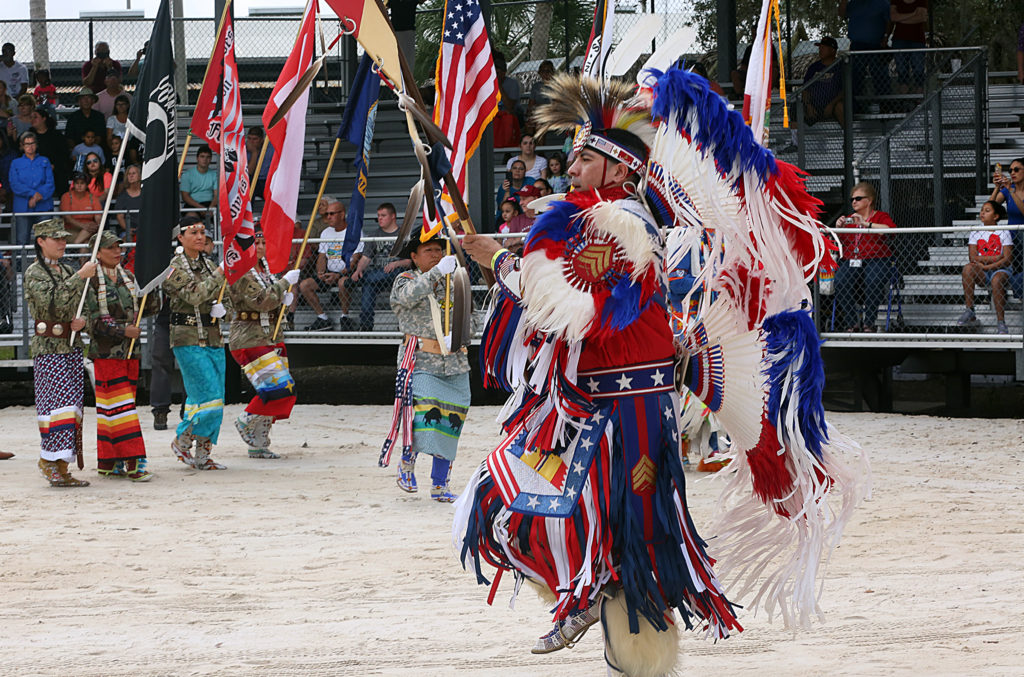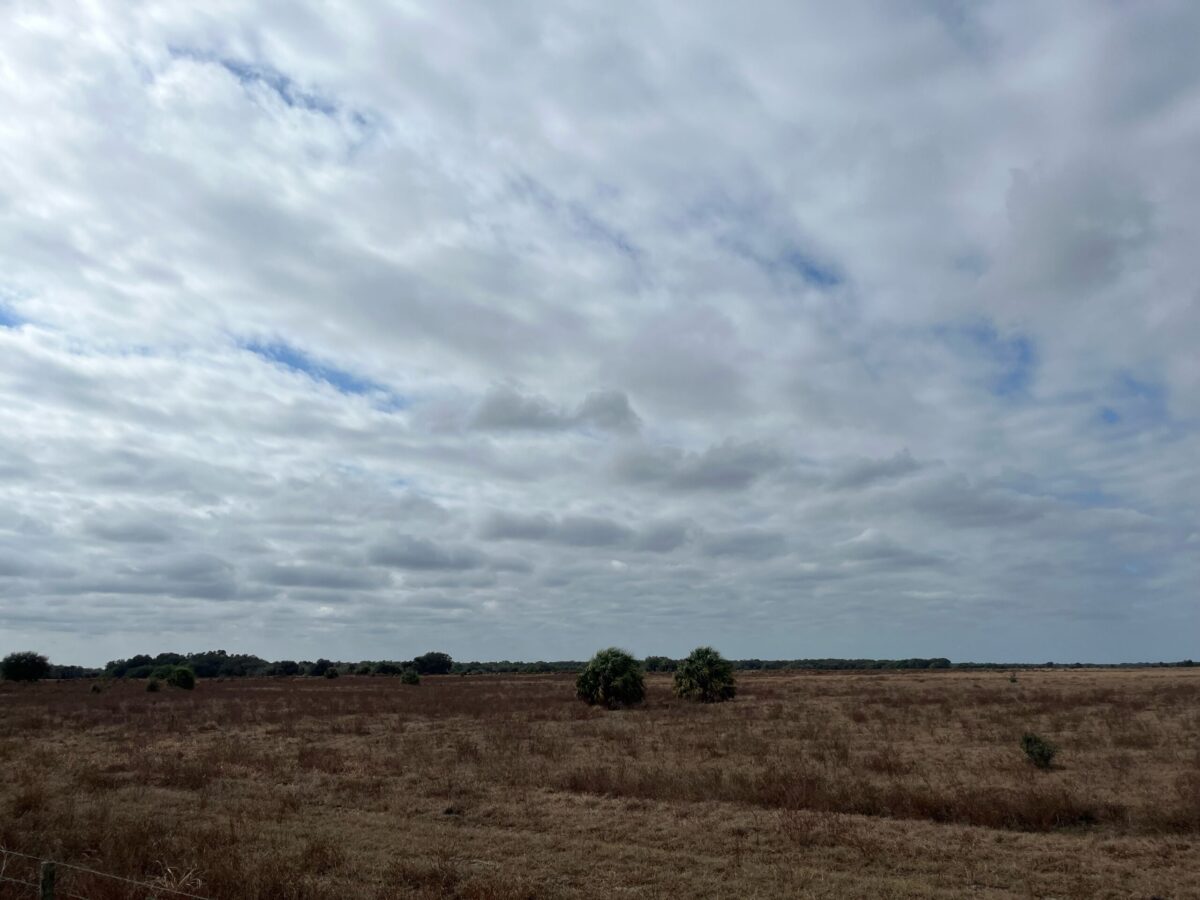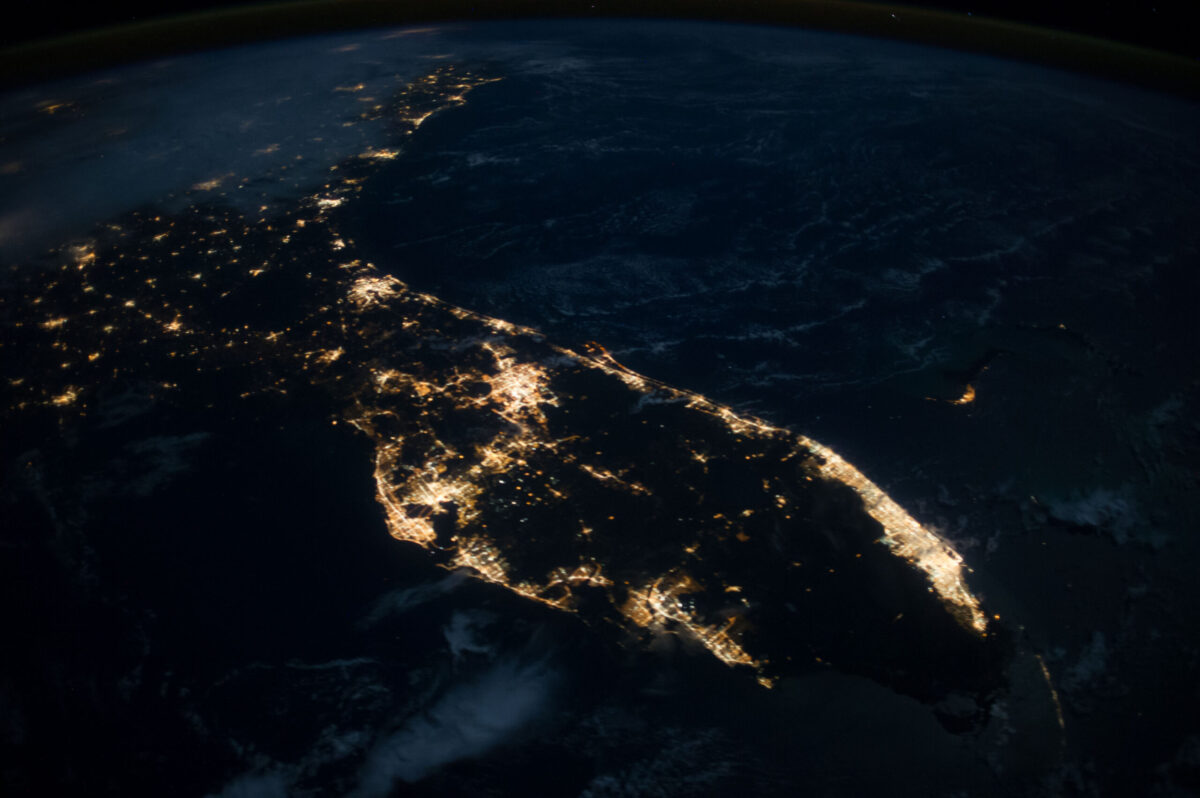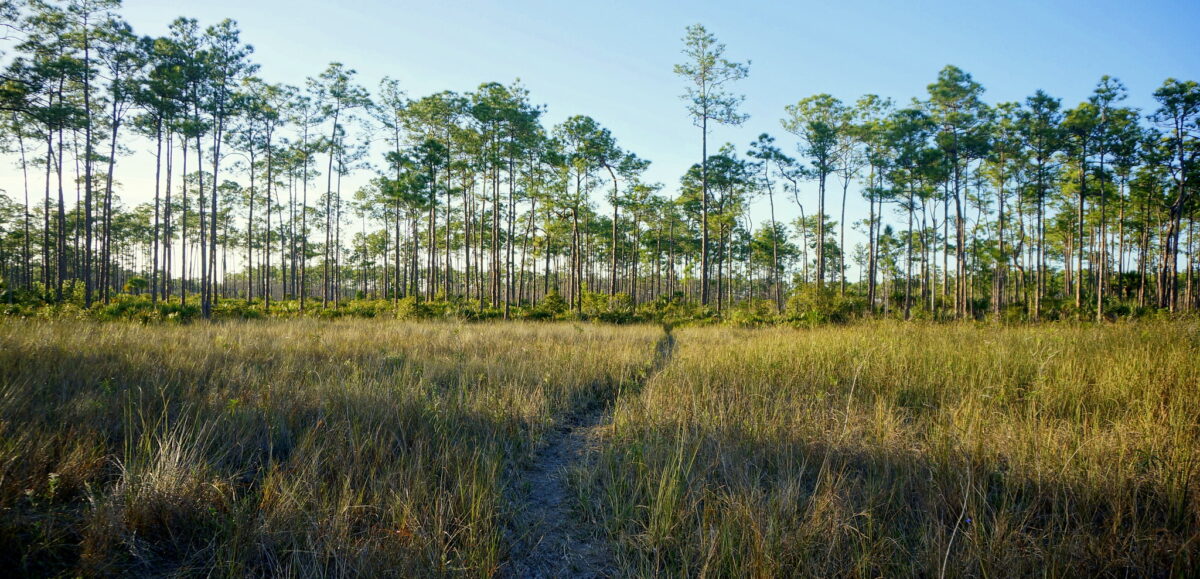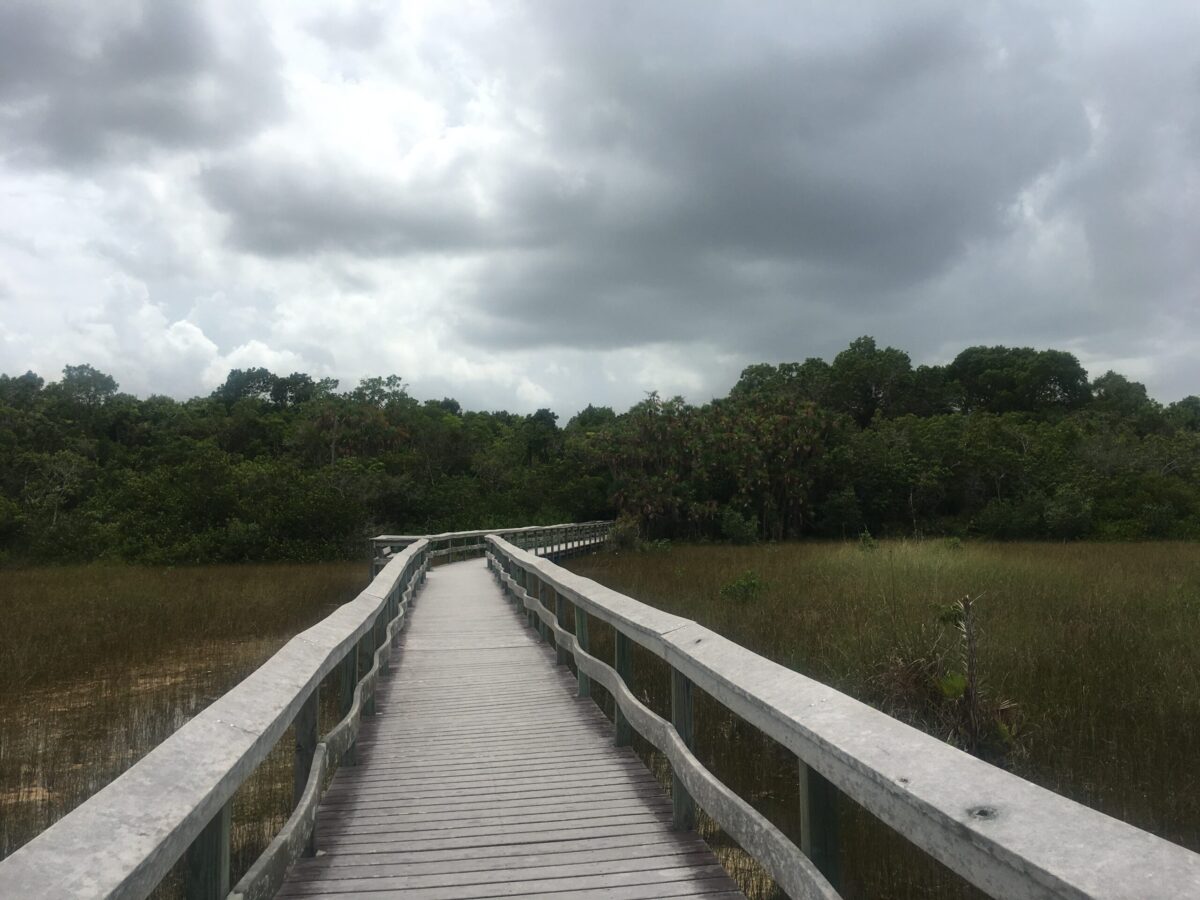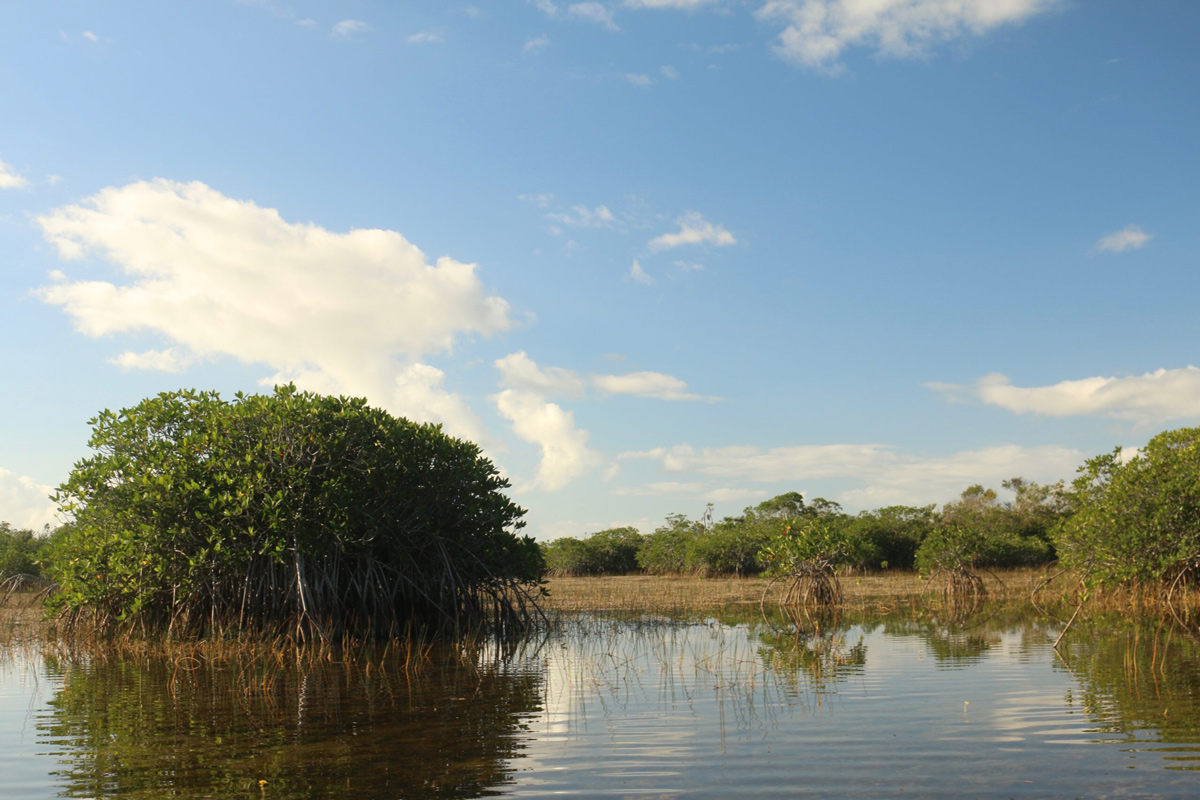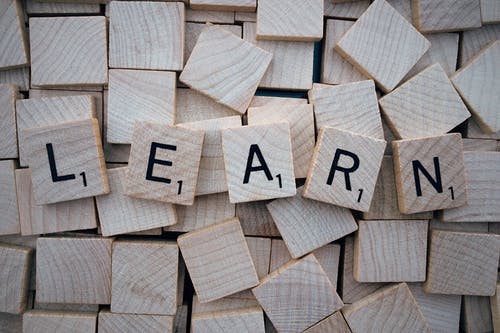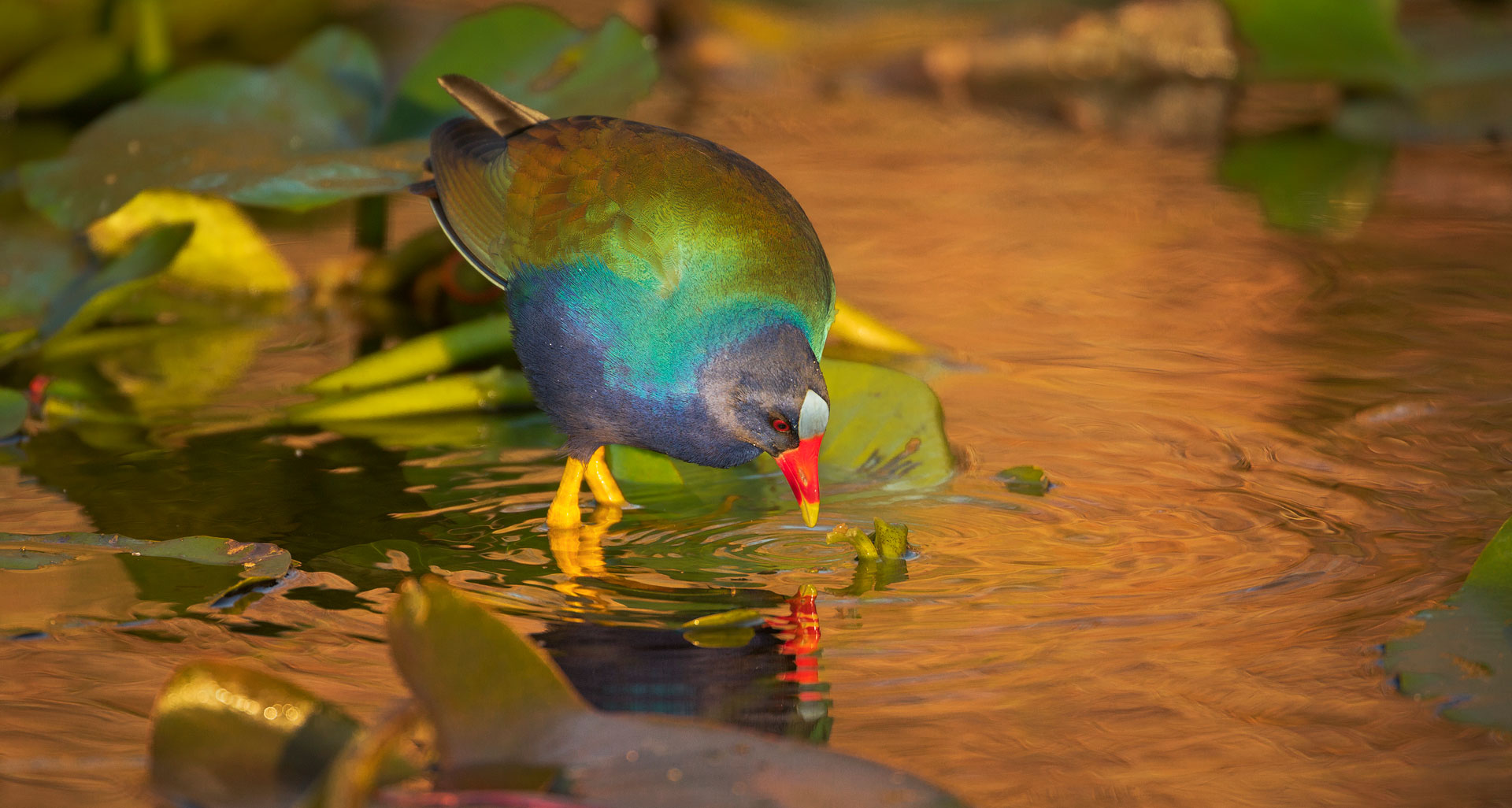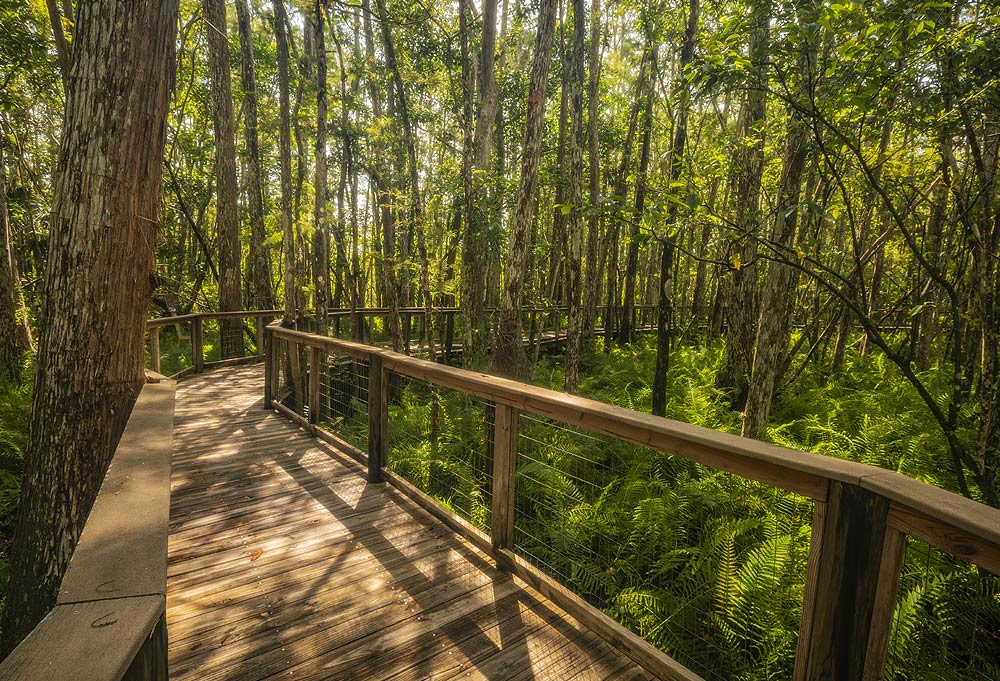What’s Next? Covid-19, the 2020s and Beyond
Welcome back to the final installment of our Decades of Seminole Tourism series! Over the last year we have traced the triumphs and struggles of Seminole tourism throughout the decades, from the first forays into tourist camps to the monumental success of the casino industry. Last month, we looked at the changes to Seminole tourism in the 2010s. In particular, we celebrated and explored the impact of the Seminole Princesses. For the first time ever, a Seminole Tribe of Florida Tribal Member, was crowned Miss Indian World in 2019. This week, we will be looking at the extreme challenges that have faced Seminole tourism so far in the 2020s with the Covid-19 pandemic. Additionally, we will take a hopeful look at what’s next. In our featured image this week, you can see the first Grand Entry of the Brighton Field Day Festival & Rodeo on February 14, 2020 (photo by Beverly
Tribal Tourism Reimagined in the 1990s
In the 1990s, the Seminole Tribe reinvested their financial gains into tribal tourism, diversifying cultural attractions and leaning heavily into ecotourism.
Day-trip Drive from Fort Myers
Join us for a road trip from Fort Myers, FL to the Ah-Tah-Thi-Ki Museum! Get everything you need to know for your day trip to the Big Cypress Reservation.
Summer Stargazing in Big Cypress
Visiting the Everglades? Make sure to look up! Follow along this week for everything you need about summer stargazing. From supermoons to stars, the night sky is sure to dazzle.
Big Cypress Seminole Reservation from the Florida Trail
Lace up your boots! This week, follow along as we learn about the Florida Trail, a meandering scenic national trail that travels through some of Florida’s wildest areas.
Welcome to Florida’s Wet Season!
Welcome to Florida’s Wet Season! Hurricane season started just a few days ago on June 1st. This week, follow along for a comprehensive rundown of wet season in Florida. From shifts in weather, birds and animals you may spot, and tips and tricks, there is information for every Florida traveler.
Biodiversity in the Florida Everglades
Join us for a swamp walk! Explore the biodiversity of the Florida Everglades as we visit this unique wetland.
Class is in Session in the Florida Everglades
In the current age of technology, many have realized that teaching and learning can often feel mundane. What is meant to enrich the mind and inspire passion ends up feeling like a burden. Repetitive routines often hinder the ability to absorb new information, which can be particularly dull for young learners. For this reason, educators are constantly in search of exciting, new ways to spice up their curriculum. Thankfully, school field trips to Billie Swamp Safari can easily provide the getaway experience so many have been trying to incorporate into the classroom. Experiential Natural Science School field trips are a vital part of any educational curriculum as they allow for freedom to get out of the classroom setting, experience something new, and above all, have a little fun. So, what happens if academic learning can be paired with the fun? Everyone wins! As such, school field trips at Billie Swamp Safari can
Birds of the Florida Everglades
The Florida Everglades, rich in history, beauty and culture, are also home to some of the most magnificent creatures the North America has to offer; birds. As the only subtropical preserve in all of North America, the Everglades provides the most significant breeding grounds for tropical wading birds. Here, more than 350 different species of birds have been seen, including bitterns, storks, even endangered species like the ultra-rare Snail Kites. So, the next time you venture to the Florida Everglades, don’t forget to bring your binoculars, camera, sunscreen and bird field identification book. Role in Nature Ecologically, birds assist the environment in so many ways. Some birds aid in plant reproduction through pollination or seed dispersion, and others provide a host body for parasites. Birds naturally sustain population levels and serve as food after death, much like any other species. The most common rule of thumb in the Everglades is, the healthier
Dry Season Offers Greater Access to Everglades Wildlife
Millions of people flock to South Florida each year, a few more at this time of year. While the beaches and golf courses are fantastic, many come to the Everglades to see the majesty of a subtropical ecosystem in action. Everyone wants to see an alligator (or 10). Many people ask, “when is the best time of year to see the Everglades.” The Seminole guides at Billie Swamp Safari will tell you, “there is never a bad time to visit the Everglades!” You see, The Everglades are 734 square miles big and nature and wildlife are in full swing 365 days a year. Essentially the Everglades has two seasons, and both offer great opportunities to connect with nature (and see a few gators). Less Insects, More Animals The Everglades has a dry season and a wet season. The dry season is from December to April, where the water levels and temperatures drop


